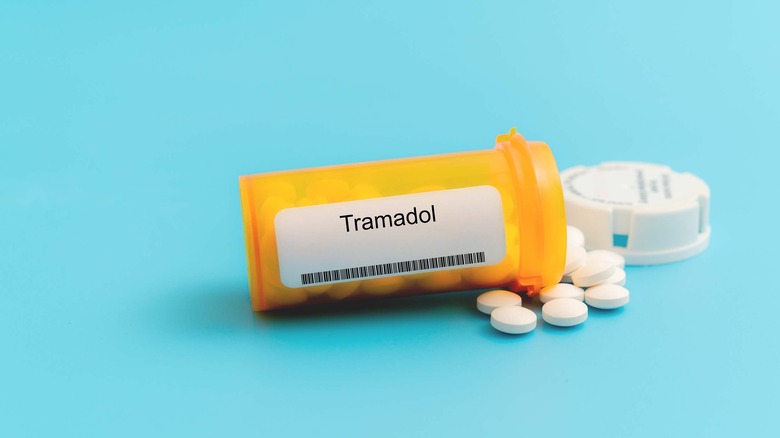This Is How Long It Takes For Tramadol To Start Working
According to Drugs.com, tramadol is a prescription medication that can help with moderate to severe pain. It's also one of many common drugs recommended by the American Academy of Orthopaedic Surgeons for pain relief from osteoarthritis, per Harvard Health Publishing. The U.S. Drug Enforcement Agency lists it as a Schedule IV controlled substance, meaning it has a low potential for abuse and a low risk of dependence.
Mayo Clinic classifies tramadol as an opioid analgesic, an umbrella term for all medications that act on the body's opioid receptors, which can be used to manage chronic pain. A 2022 study published in the journal Stat Pearls explains that tramadol blocks calcium channels inhibiting the release of neurotransmitters that contribute to the sensation of pain.
If your doctor has prescribed the use of tramadol, you might be wondering how long it takes to start working. How fast the drug will work mostly depends on your dosage form. The various forms include tablet, liquid, extended-release tablet, and extended-release capsule (via Medline Plus).
Tramadol dosage forms and how quickly they work
Drugs.com notes that tramadol generally takes one hour to work. The NHS confirms that tramadol drops, injections, and some fast-acting tablets and capsules will start to work within 30 minutes to an hour. Furthermore, Healthline states that the effects wear off after 4 to 6 hours. Its levels peak in your system after 2 to 3 hours, according to Drugs.com.
The extended-release forms generally take longer to work because, as the name suggests, they're gradually released in your system, and their levels peak after 10 to 12 hours. However, pain relief from slow-release tramadol usually lasts longer — up to 24 hours.
Drugs.com notes that food has minimal effect on how fast the drug works or how quickly it's absorbed in the body for the conventional tablets and extended-release capsules. However, taking the extended-release tablet with a high-fat meal might slow down how quickly it's absorbed so it could take longer to start working and you might not get as much pain relief.
Your doctor will determine the right tramadol dosage and formulation for you based on your condition and previous response to painkillers. You should always follow your doctor's instructions. Usually, the dosage for tramadol extended-release capsules for chronic pain is between 100 and 300 milligrams, once daily for adults, according to Mayo Clinic. It isn't recommended for use in children below 12 years, and those over 12 must consult with a doctor.
What are the side effects of tramadol?
According to WebMD, many people using tramadol don't have serious medication side effects. Common ones to expect are nausea, vomiting, constipation, lightheadedness, drowsiness, or headaches. Most of these side effects decrease as you continue your medication. There are several less common side effects of tramadol intake outlined by Medical News Today. They include but are not limited to, a decrease in blood pressure, suicidal tendencies, menopausal symptoms, frequent urination, and pupil constriction leading to visual disturbances. The source also indicates other grave side effects associated with tramadol intake, which are rare but crucial to note. They include respiratory depression, which usually occurs when a patient starts to increase their tramadol dosage, as well as serotonin syndrome, and heart rhythm problems.
People who overdose on tramadol are at even greater risk of respiratory depression and other life-threatening side effects of tramadol use like serotonin syndrome or heart rhythm problems. It's crucial to stick to the dosage advised by your doctor and follow all instructions given. In case of an overdose, please immediately get in touch with emergency services.



